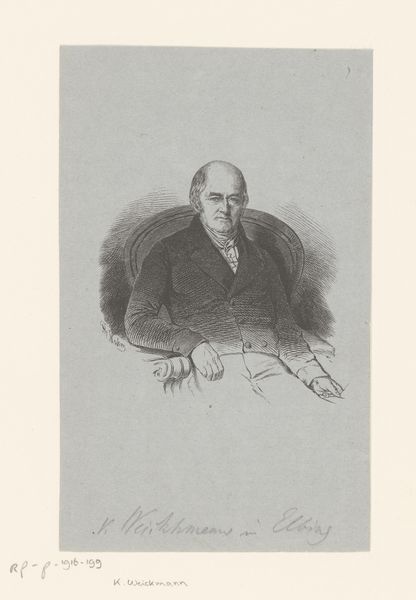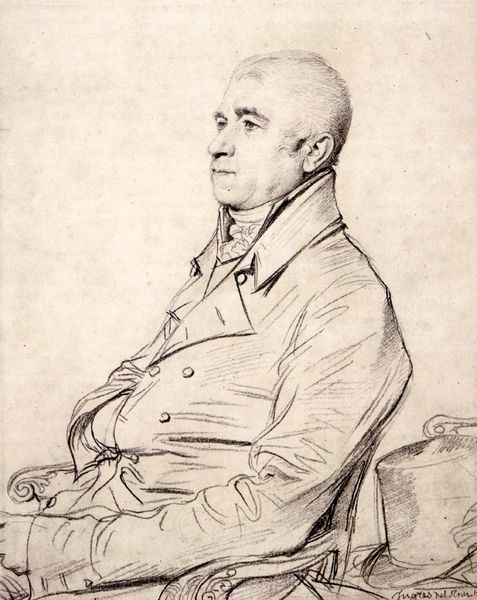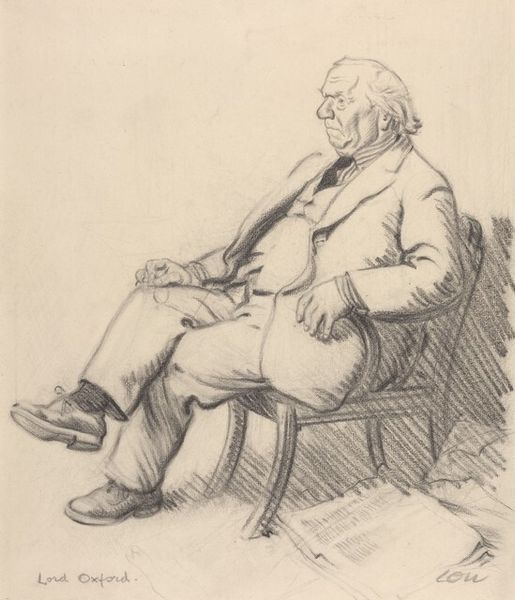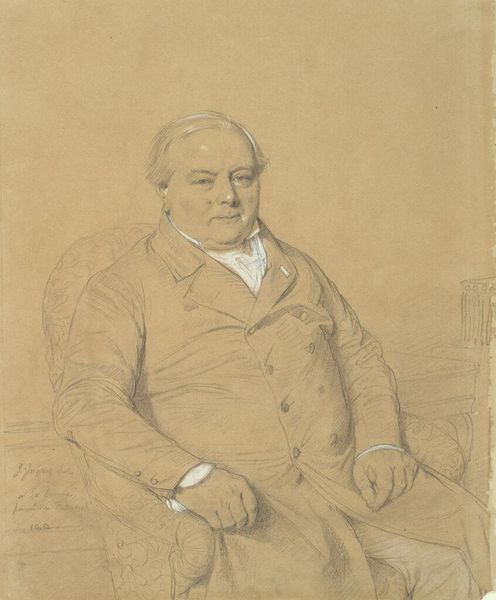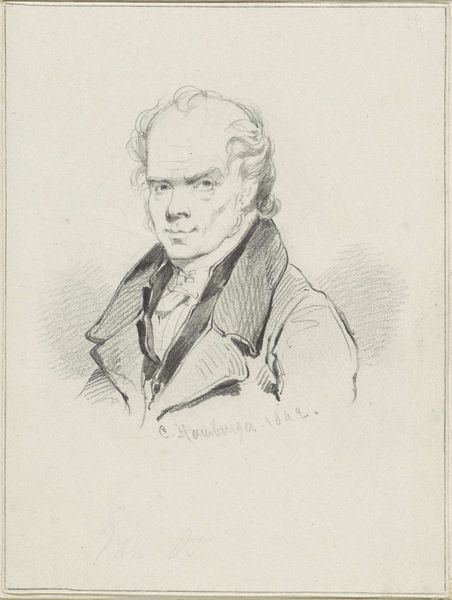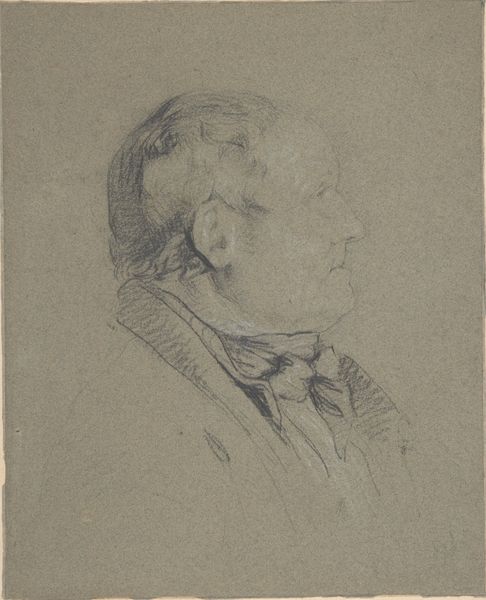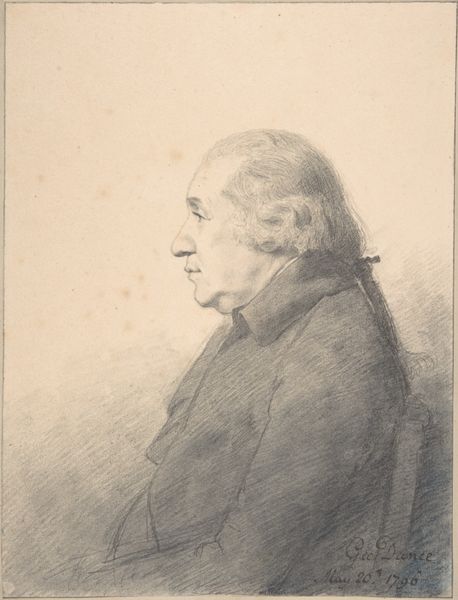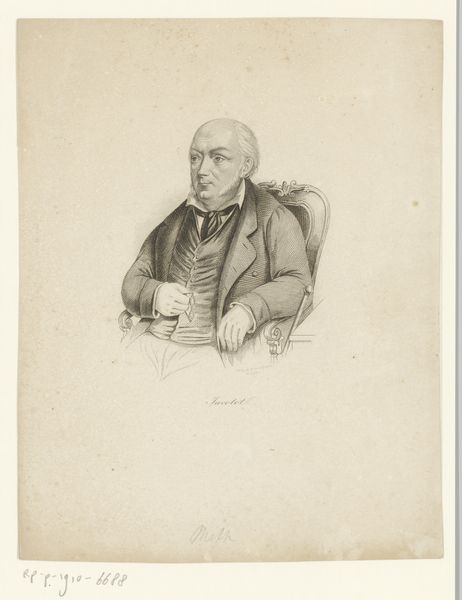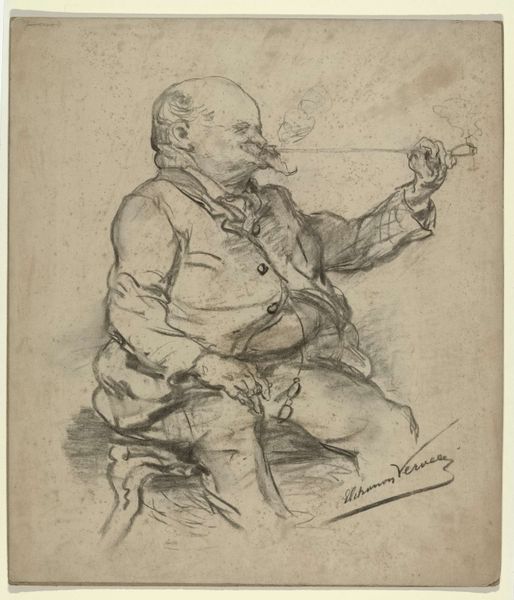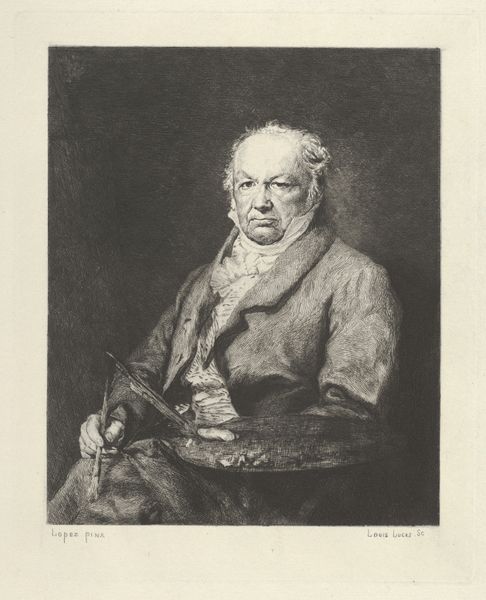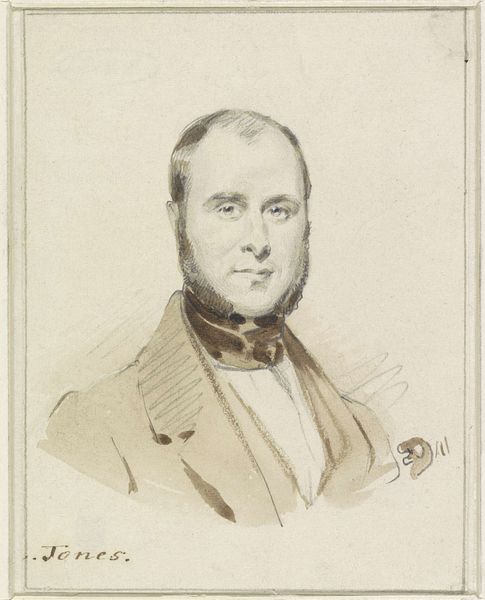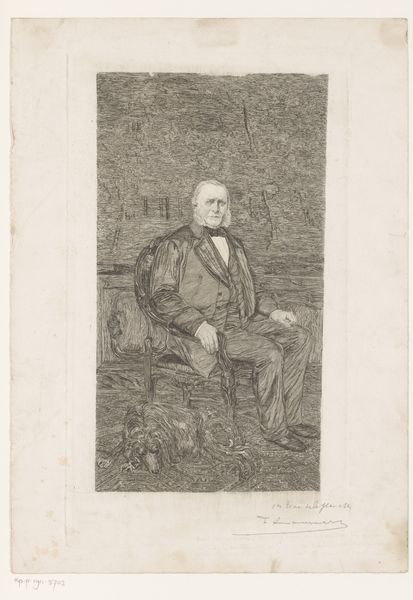
Dimensions: plate: 13 7/8 x 10 1/16 in. (35.2 x 25.6 cm)
Copyright: Public Domain
Charles Meryon created this etching, "Casimir le Conte, after Boulanger," in 19th century France, a time of significant social and political change. Meryon’s meticulous lines depict a bourgeois man seated with a cane and hat. The portrait reflects the values of the rising middle class and the increasing importance of individual identity in French society. It's worth noting that this image is a copy, "after Boulanger," which tells us something about the hierarchies within the 19th-century art world and the role of printmaking in disseminating images. The institutions of art, such as the Salon and the École des Beaux-Arts, played a crucial role in shaping artistic production and taste during this period. Artists often had to navigate these institutions in order to gain recognition and financial success. By studying archival documents, exhibition catalogs, and contemporary reviews, we can gain a deeper understanding of the social and institutional context in which Meryon's etching was made and the ways in which it reflects the values and concerns of its time. Art history is all about understanding how these forces shape the art we see.
Comments
No comments
Be the first to comment and join the conversation on the ultimate creative platform.
